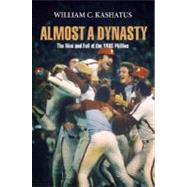Elsie Driggs
, by Kimmerle, Constance- ISBN: 9780812241044 | 0812241045
- Cover: Hardcover
- Copyright: 1/23/2008
Modernist artist Elsie Driggs (1898-1992) is best known for her precisionist paintings of the 1920s that take their subject matter from the world of industry and engineering. Although most critics of the era described the precisionist vision as cool and dispassionate, it was the brooding, imaginative qualities of Driggs's industrial scenes that distinguished her work and solidified her reputation as a young New York artist. The anxious uncertain mood of these landscapes suggests an influence of the surrealist aesthetic just appearing in New York at that time. Over the course of her thirty-year marriage to abstract artist Lee Gatch, Driggs found it necessary to work from a makeshift kitchen studio as she supported her husband through his long periods of alcohol addiction. Experimenting with watercolor and collage techniques, she began creating works from her kitchen table that incorporated what she described as "accidents." When she finally gained her own studio space in the mid-1960s and subsequently returned to New York, these watercolor techniques and spontaneous strategies of making art were further refined and developed in highly imaginative and evocative oil paintings and multimedia constructions.Elsie Driggs: The Quick and the Classicalhighlights the work of an artist who explored a diverse range of styles and subject matter throughout her long career. While previous scholarship has focused on the precise craftsmanship, wit, and delicate beauty of her work,Elsie Driggs: The Quick and the Classicalexplores the ideological and emotional richness of the body of work she produced from 1918 through the late 1980s. As Constance Kimmerle suggests, Driggs's lifelong passion to blend "the quick and the classical" resulted not only from her fascination with the work of Paul Ceacute;zanne and Piero della Francesca but also from her view of art as a process of discovery and experimentation.







